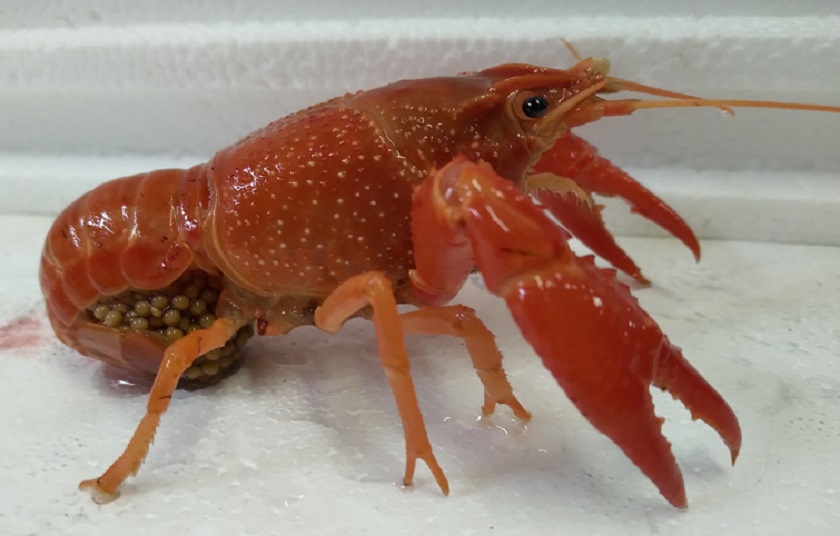
Wednesday 14 July 2021
The highly invasive red swamp crayfish poses an extreme risk to Western Australia’s native crustacean species and presents a threat to ecosystems if introduced into local waterways. It’s a declared noxious species in all Australian States and Territories.
Seventy of these noxious freshwater crayfish have been seized during Operation Winterfox, a Department of Primary Industries and Regional Development (DPIRD) operation into the illegal possession and sale of noxious and non-endemic crustaceans.
DPIRD Fisheries Officers recently executed four search warrants in the Bunbury and Capel areas supported by local WA Police officers.
Aquatic Biosecurity Compliance Supervising Fisheries Officer Renee Hilditch said in WA people are not allowed to keep, breed, hatch, culture, possess, consign, convey or release a declared noxious fish and that significant penalties would apply if they did.
“Anyone found in possession of noxious species, such as red swamp crayfish, could face fines up to $10,000 under WA’s Fish Resources Management Act 1994,” Officer Hilditch added.
“I urge members of the public with any information about red swamp crayfish or other illegal aquarium species to contact the department.
“DPIRD’s Aquatic Biosecurity Compliance team is working to educate the community on the need to minimise the risks of noxious fish impacting on WA’s aquatic environment.”
Red swamp crayfish have the potential to severely impact native freshwater crayfish such as marron, through competition and the introduction of exotic diseases, such as crayfish plague.
Australia is free from crayfish plague, however, if the disease is introduced into WA or Australia, it has the potential to cause large-scale mortalities in many of our freshwater crayfish species and could devastate the freshwater crayfish aquaculture industry.
Red swamp crayfish can range in length from 5–12 cm, their claws and head are elongated and small spines may be present on the sides of its carapace below the head. They can be dark to light red, with rows of bright red bumps on the front and side of the first leg.
If you think you have seen any red swamp crayfish, or have information about any noxious fish being kept or traded, you can report it anonymously to FishWatch on 1800 815 507 or send an email to tipoff@dpird.wa.gov.au.
Never dispose of, or release unwanted or illegal aquarium animals into any waterways or drains. Dispose of dead aquarium animals by securing them in a plastic bag and placing them in a household rubbish bin for council landfill.
Media contact: Ashley Malone, media adviser 0418 901 767
Image caption: A red swamp crayfish carrying eggs – a huge risk to WA's aquatic environment.


